Looking out at our Universe today, we not only see a huge variety of stars and galaxies both nearby and far away, we also see a curious relationship: the farther away a distant galaxy is, the faster it appears to move away from us. This continues as far as we’ve ever looked, and remains true on average for all galaxies: the farther away they are, the greater their observed redshift (corresponding to recession) is. In cosmic terms, the Universe is expanding, with all the galaxies and clusters of galaxies getting more distant from one another over time. In the past, therefore, the Universe was hotter, denser, and everything in it was closer together.
Imagine what this means if the Universe is, and has always been, expanding: not just for the future, but for our cosmic past as well. If we extrapolate back as far as possible, we’d come to a time:
- before the first galaxies formed,
- before the first stars ignited,
- before neutral atoms,
- or atomic nuclei,
- or even stable matter,
could exist. The earliest moment at which we can describe our Universe as hot, dense, and uniformly full-of-stuff is known as the Big Bang. Here’s the story of how it first began.
Nearby, the stars and galaxies we see look very much like our own. But as we look farther away, we see the Universe as it was in the distant past: less structured, hotter, younger, and less evolved. If you look farther and farther away, you also look farther and farther into the past. The earlier you go, the hotter and denser, as well as less-evolved, the Universe turns out to be. The earliest signals can even, potentially, tell us about what happened in, and even just prior to, the first moments of the hot Big Bang
Some of you are going to read that last sentence and be confused. You might ask, “Isn’t the Big Bang the birth of time and space?” And this is a view that many modern cosmologists can be sympathetic to, as at one point in the history of cosmology, that’s how the Big Bang was originally conceived. Take something that’s expanding and of a certain size and age today, and you can go back to a time where it was arbitrarily small and dense. When you get down to a single point, where all the matter and energy in the Universe comes together at once, that event corresponds to what we know as a singularity: a point from which space and time originally emerge.
But we know that’s not correct today, in 2023. In fact, there’s a ton of evidence that points to a non-singular origin to our Universe. We never achieved those arbitrarily high temperatures; there’s a cutoff. Instead, our Universe is best described by an inflationary period that occurred prior to the Big Bang, and the Big Bang is the aftermath of what occurred at the end of inflation.
Let’s walk through what that looked like.
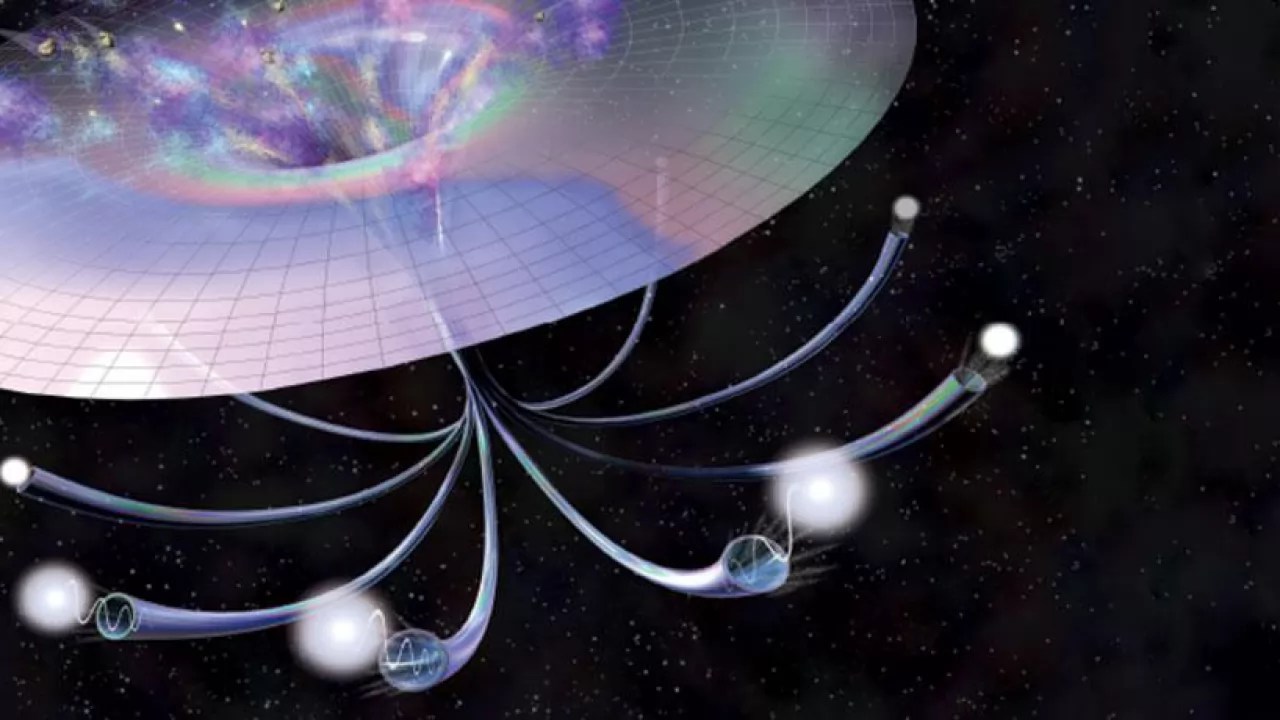
From whatever pre-existing state started it, inflation predicts that a series of independent universes will be spawned as inflation continues, with each one being completely disconnected from every other one, separated by more inflating space. One of these “bubbles,” where inflation ended, gave birth to our Universe some 13.8 billion years ago, with a very low entropy density, but without ever violating the 2nd law of thermodynamics. It is unknown what spawned the state of inflation, only that it couldn’t be eternal to the past.
During inflation, the Universe was completely empty. There were no particles, no matter, no photons; just empty space itself. That empty space had a huge amount of energy in it at every location, with the exact amount of energy slightly fluctuating over time: by about 1 part in 30,000, on average.
As the Universe inflates, expanding in a rapid, relentless fashion, those fluctuations get stretched to larger scales, while new, small-scale fluctuations are created atop them. This superposition of fluctuations, of small-scales atop intermediate-scales atop large-scales atop superhorizon-scales, is one of the defining predictive features of cosmic inflation. (We described what the Universe looked like during inflation previously.)
This continues as long as inflation goes on. But inflation will come to an end randomly, and not in all locations at once. In fact, if you lived in an inflating Universe, you’d likely experience a nearby region where inflation came to an end, while the space between you and it expanded exponentially. For a brief instant, you might even be able to detect what happens at the start of a Big Bang, before that region disappeared entirely from view.
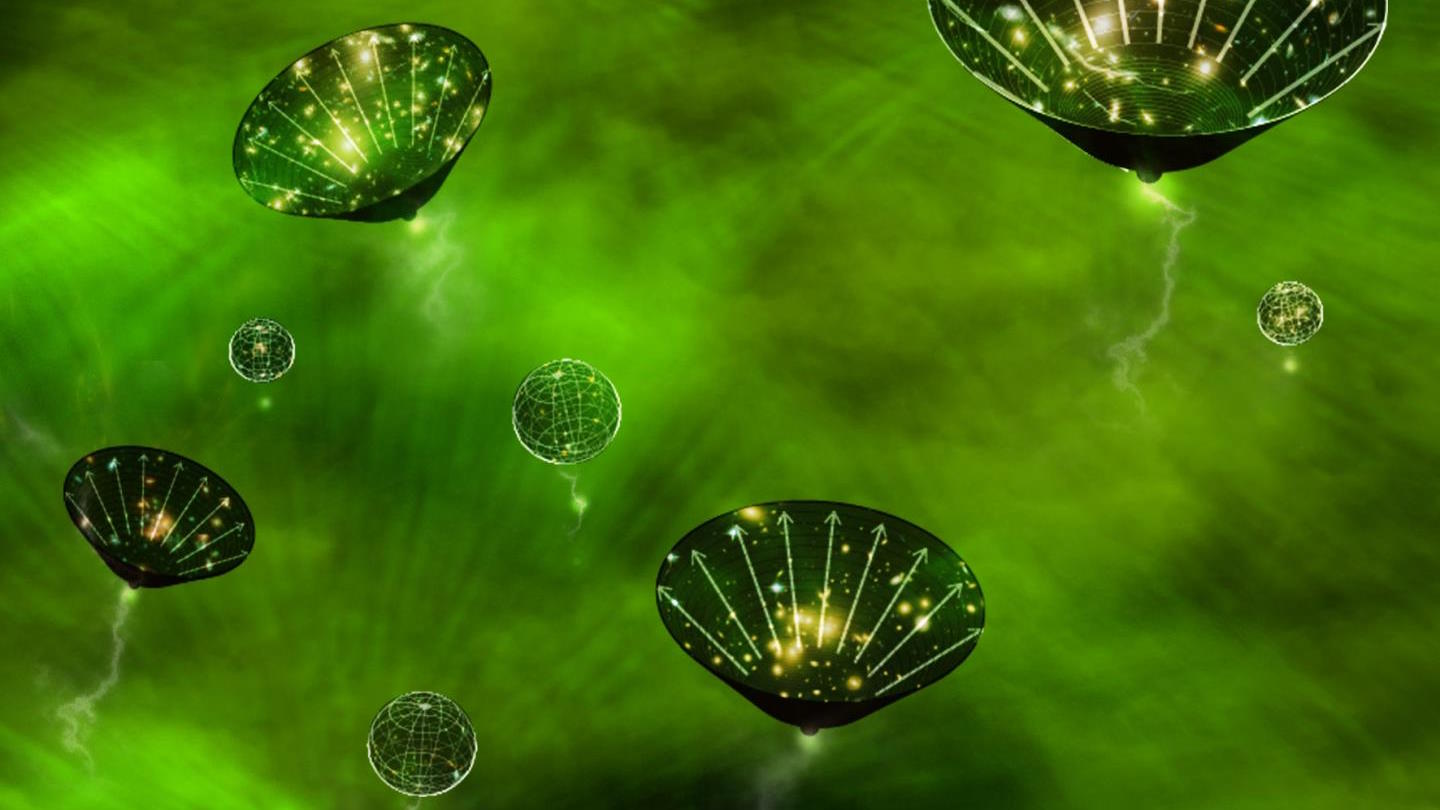
During cosmological inflation, the space contained in the inflationary region grows exponentially, doubling in all three dimensions with each tiny fraction-of-a-second that passes. Where inflation ends, a hot Big Bang ensues. But due to quantum effects, each region where a Big Bang occurs will be surrounded by more inflating, exponentially expanding space, ensuring that no two regions where hot Big Bangs occur ever collide, intersect, or overlap.
In an initially, relatively small region, perhaps no bigger than a human-sized hamster ball (but perhaps much larger), the energy inherent to space gets converted into matter and radiation. The conversion process is relatively fast, taking approximately ~10-33 seconds or so: a brief amount of time, but nonetheless one that is not instantaneous. As the energy bound up in space itself gets converted into particles, antiparticles, photons and more, the temperature starts to rapidly rise: from just a few degrees above absolute zero to perhaps ~1020 K or so, over that same brief time interval..
Because the amount of energy that gets converted is so large, everything will be moving close to the speed of light. All quanta will behave as radiation with so much kinetic energy inherent to them, regardless of whether the particles are massless or massive; it doesn’t matter under these conditions. This conversion process is known as reheating, and signifies when inflation comes to an end and the stage known as the hot Big Bang begins.

The analogy of a ball sliding over a high surface is when inflation persists, while the structure crumbling and releasing energy represents the conversion of energy into particles, which occurs at the end of inflation. This transformation — from inflationary energy into matter and radiation — represents an abrupt change in the expansion and properties of the Universe, as well as a tremendous increase in entropy wherever inflation ends.
In terms of the expansion speed, you’ll witness a tremendous change from all prior behavior when the hot Big Bang first commences.
In an inflationary Universe, space expands exponentially, with more distant regions accelerating away relentlessly as time goes on. But when inflation ends, the Universe reheats, and the hot Big Bang starts, more distant regions will now recede from you more and more slowly as time goes on.
From an outside perspective, the part of the Universe where inflation ends sees the expansion rate there drop, while the inflating regions surrounding it see no such drop. Under inflation, the distance to any object would double after a certain amount of time, and once that same amount of time elapses, that distance doubles yet again, and again, and again. The process is relentless. But once the Big Bang begins, all of that changes, as the expanding Universe immediately slows down once the first moment of expansion elapses.
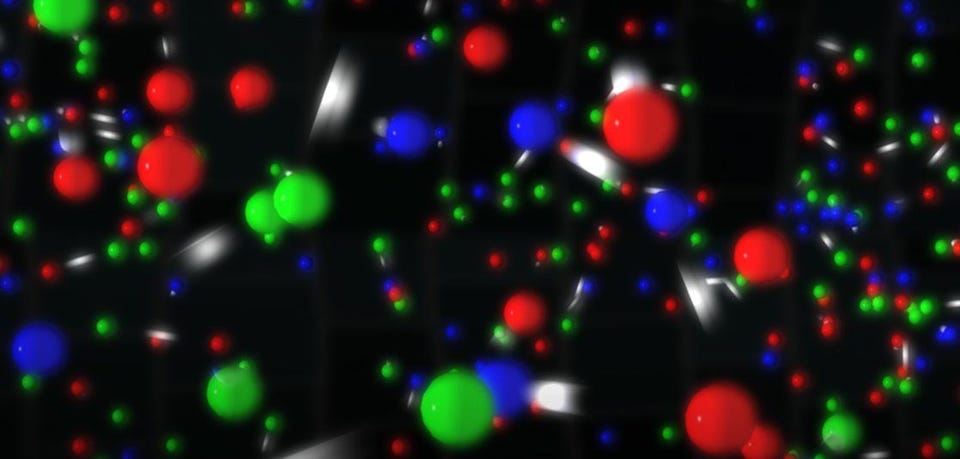
At the high temperatures achieved in the very young Universe, not only can particles and photons be spontaneously created, given enough energy, but also antiparticles and unstable particles as well, resulting in a primordial particle-and-antiparticle soup. Yet even with these conditions, only a few specific states, or particles, can emerge, and by the time a few seconds have passed, the Universe is much larger than it was in the earliest stages. As the Universe begins expanding, the density, temperature, and expansion rate of the Universe all rapidly drop as well.
Probability-wise, it’s extremely likely that from the perspective of whatever region of inflating space you’re in prior to the Big Bang, you’ll experience inflation ending in nearby regions many times. These locations where inflation ends will quickly fill with matter, antimatter, and radiation, and expand more slowly than the still-inflating regions do, leaving you — in the inflating region — as a “typical” region within spacetime, dominating its volume.
These regions, where hot Big Bangs occur, will expand away from all the other locations where inflation still goes on exponentially, meaning they will very quickly recede from one another’s view. In the standard inflationary picture, because of this expansion rate change, there’s virtually no chance that any two Universes, where separate hot Big Bangs occur, will ever collide or interact.
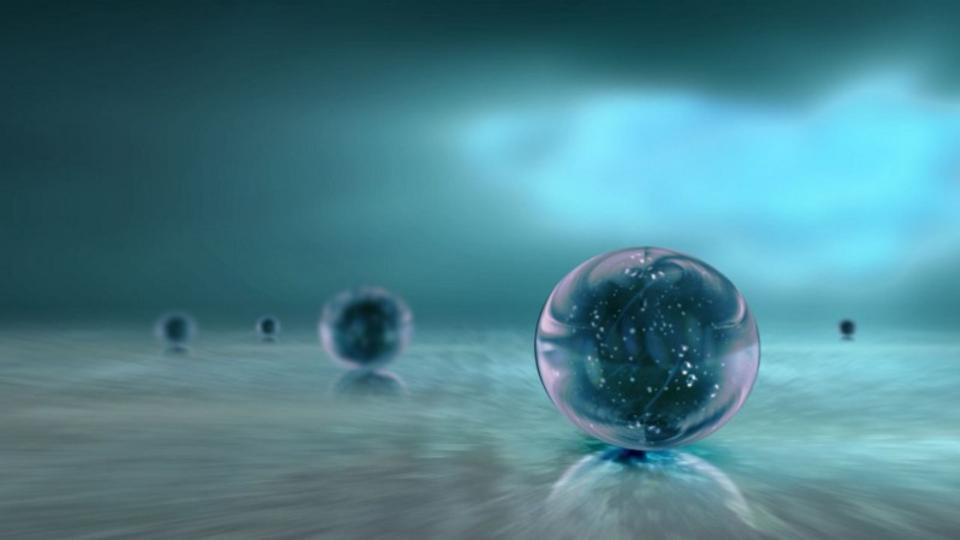
While many independent Universes are predicted to be created in an inflating spacetime, inflation never ends everywhere at once, but rather only in distinct, independent areas separated by space that continues to inflate. This is where the scientific motivation for a Multiverse comes from, and why no two Universes will ever collide. The Universe doesn’t expand into anything; it itself is expanding.
Finally, the region where we will come to live gets cosmically lucky, and inflation comes to an end for us. The energy that was inherent to space itself gets converted to a hot, dense, and almost uniform sea of particles. The only imperfections, and the only departures from uniformity, correspond to the quantum fluctuations that existed (and were stretched across the Universe) during inflation.
The positive-energy quantum fluctuations will correspond to initially overdense regions, while the negative-energy fluctuations get converted into initially underdense regions. The typical difference might only be at the ~0.003% level, but that’s still enough to serve as the eventual seeds of cosmic structure.
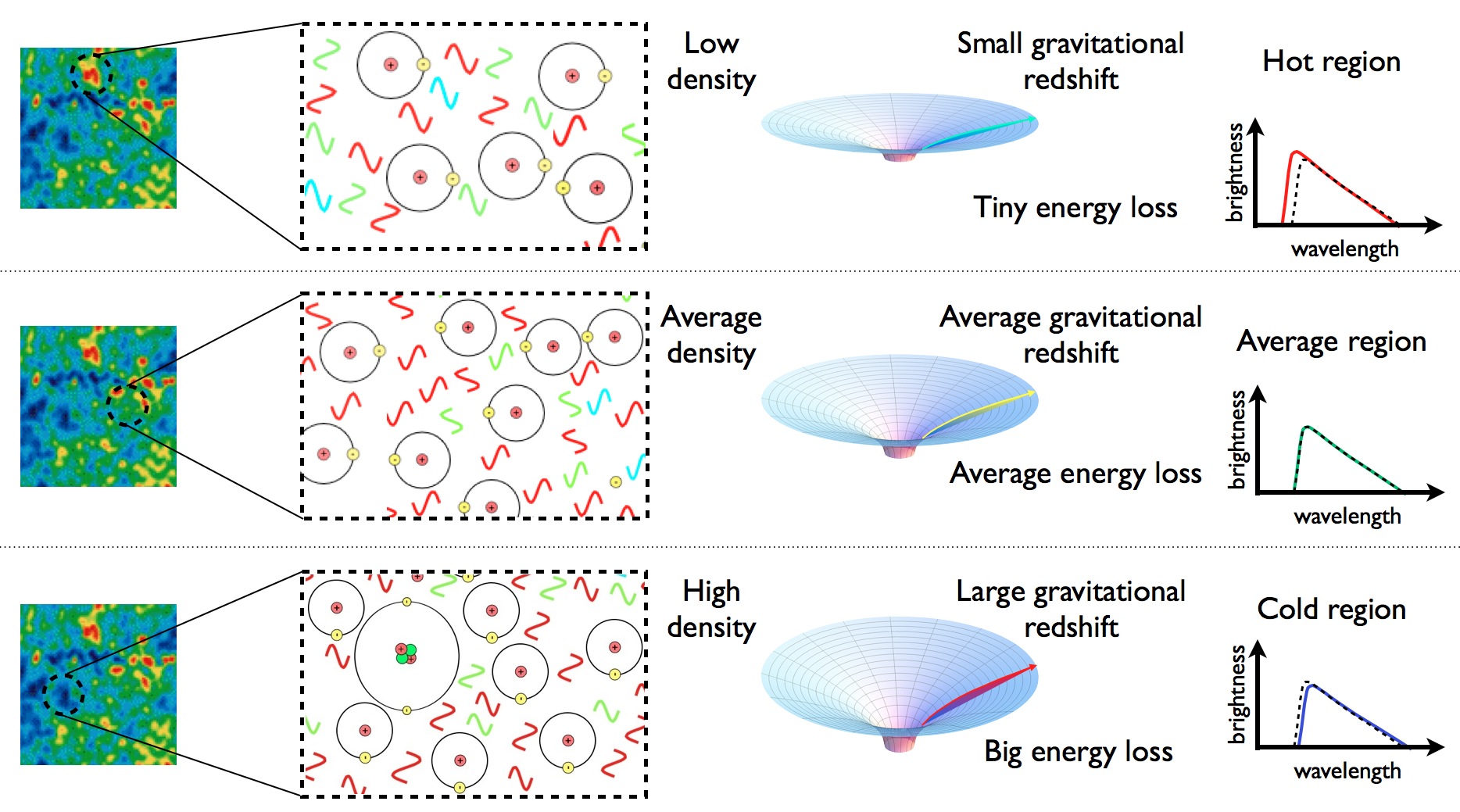
Regions of space that are slightly denser than average will create larger gravitational potential wells to climb out of, meaning the light arising from those regions appears colder by the time it arrives at our eyes. Vice versa, underdense regions will look like hot spots, while regions with perfectly average density will have perfectly average temperatures.
We cannot observe these density fluctuations, today, as they were when the Universe first underwent the hot Big Bang. There are no visual signatures we can access from that early on; the first one we’ve ever accessed comes from 380,000 years later, after they’ve undergone countless interactions.
Even at that, we can extrapolate back what the initial density fluctuations were, and find something extremely consistent with the story of cosmic inflation. The temperature fluctuations that are imprinted on the first picture of the Universe — the cosmic microwave background — gives us confirmation of how the Big Bang began.

The fluctuations in the CMB are based on primordial fluctuations produced by inflation. In particular, the ‘flat part’ on large scales (at left) has no explanation without inflation. The flat line represents the seeds from which the peak-and-valley pattern will emerge over the first 380,000 years of the Universe, and is just a few percent lower on the right (small-scale) side than the (large-scale) left side. The “wiggly” pattern is what gets imprinted in the CMB after matter and radiation both gravitate and interact, with specifically interactions between normal matter and radiation (but not between dark matter and radiation) driving the acoustic oscillations seen in the peaks and valleys.
What might someday be observable to us, however, are the gravitational waves left over from the end of inflation and the start of the hot Big Bang. The gravitational waves that inflation generates move at the speed of light in all directions, but unlike the visual signatures, no interactions ever slow them down.
Travel the Universe with astrophysicist Ethan Siegel. Subscribers will get the newsletter every Saturday. All aboard!
They will wash over us, arriving continuously, from all directions, passing through our bodies and our detectors. All we need to do, if we want to understand how our Universe got its start, is find a way to observe these waves either directly or indirectly. While many ideas and experiments abound, none have returned a successful detection so far. We know what the spectrum of these fluctuations will look like and what imprint they’ll have on the light within our Universe, but we have no idea what their magnitude is. Different models of inflation make different predictions, and only by (eventually) measuring them can we determine which model(s) accurately describe our Universe.

The contribution of gravitational waves left over from inflation to the B-mode polarization of the Cosmic Microwave background has a known shape, but its amplitude is dependent on the specific model of inflation. These B-modes from gravitational waves from inflation have not yet been observed, but detecting them would help us tremendously in pinning down precisely what type of inflation occurred.
Once inflation comes to an end, and all the energy that was inherent to space itself gets converted into particles, antiparticles, photons, etc., all the Universe can do is expand and cool. Everything smashes into one another, sometimes creating new particle/antiparticle pairs, sometimes annihilating pairs back into photons or other particles, but always dropping in energy as the Universe expands.
The Universe never reaches infinitely high temperatures or densities, but still attains energies that are perhaps a trillion times greater than anything the LHC can ever produce. The tiny seed overdensities and underdensities will eventually grow into the cosmic web of stars and galaxies that exist today. 13.8 billion years ago, the Universe as-we-know-it had its beginning. The rest is our cosmic history.

Dr. Thomas Hughes is a UK-based scientist and science communicator who makes complex topics accessible to readers. His articles explore breakthroughs in various scientific disciplines, from space exploration to cutting-edge research.








